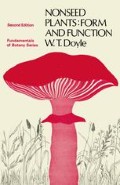Abstract
Although brown algae, or Phaeophyta (phaeo = brown; phyton = plant), are common plants of rocky seacoasts of all oceans, they have their most luxuriant development along the shores of cold marine waters. Brown algae are attached organisms which, with the exception of Sargassum, usually do not survive long when detached from their substrates. Sargassum continues growth and undergoes vegetative reproduction by fragmentation when detached, and great quantities accumulate in the large eddy in the Atlantic Ocean known as the Sargasso Sea. Most brown algae grow in the intertidal zone, where they are generally found in places exposed to the full force of wave action. The algae growing in the upper reaches of the intertidal zone are subjected to relatively long periods of desiccation during low tide. The presence of large amounts of moisture-retaining mucilaginous compounds in the cell wall cuts down on the rate of desiccation, however, and normally prevents the algae from drying out completely. Many large brown algae, known as kelp, grow in the lower part of the intertidal zone or in deeper water. The giant kelp, such as Macrocystis and Nereocystis (Fig. 9–1), often form spectacular underwater forests in deep water.
Preview
Unable to display preview. Download preview PDF.
Author information
Authors and Affiliations
Copyright information
© 1970 Wadsworth Publishing Company, Inc., Belmont, California.
About this chapter
Cite this chapter
Doyle, W.T. (1970). Brown Algae. In: Nonseed Plants: Form and Function. Fundamentals of Botany Series. Palgrave, London. https://doi.org/10.1007/978-1-349-00412-6_9
Download citation
DOI: https://doi.org/10.1007/978-1-349-00412-6_9
Publisher Name: Palgrave, London
Print ISBN: 978-1-349-00414-0
Online ISBN: 978-1-349-00412-6
eBook Packages: Biomedical and Life SciencesBiomedical and Life Sciences (R0)

